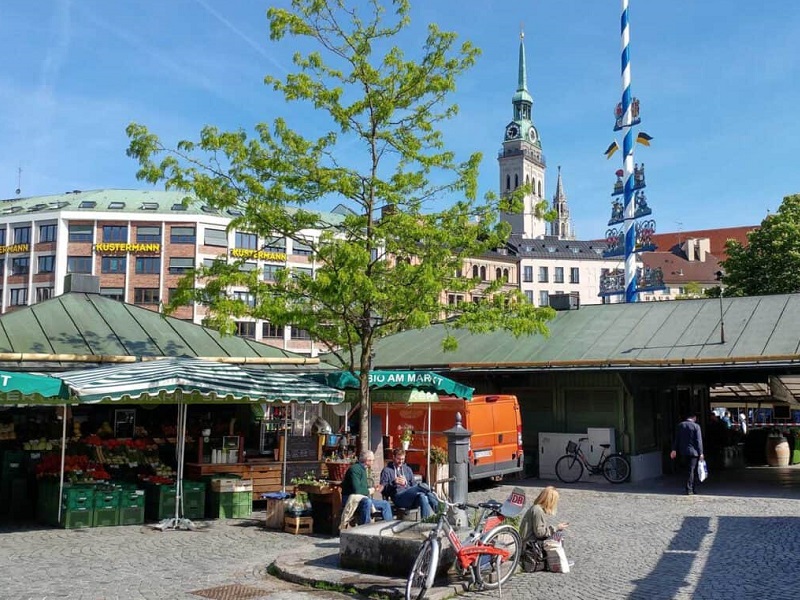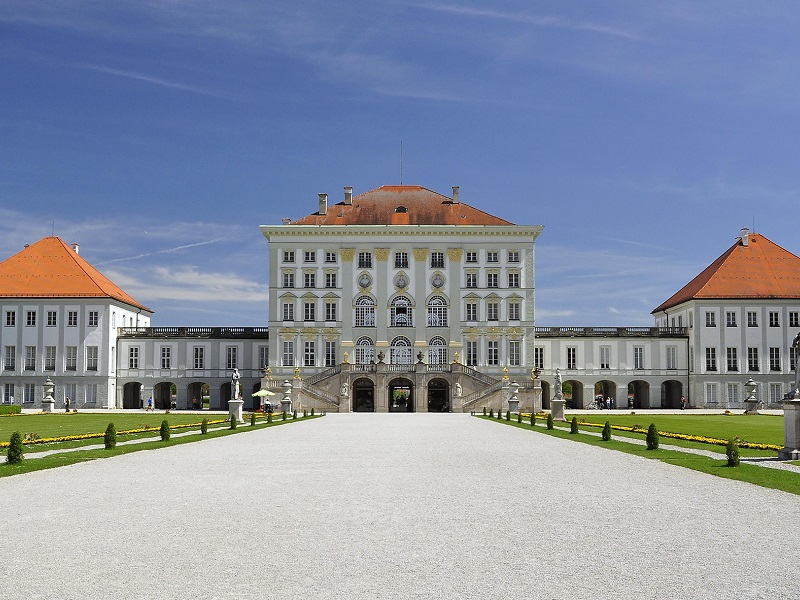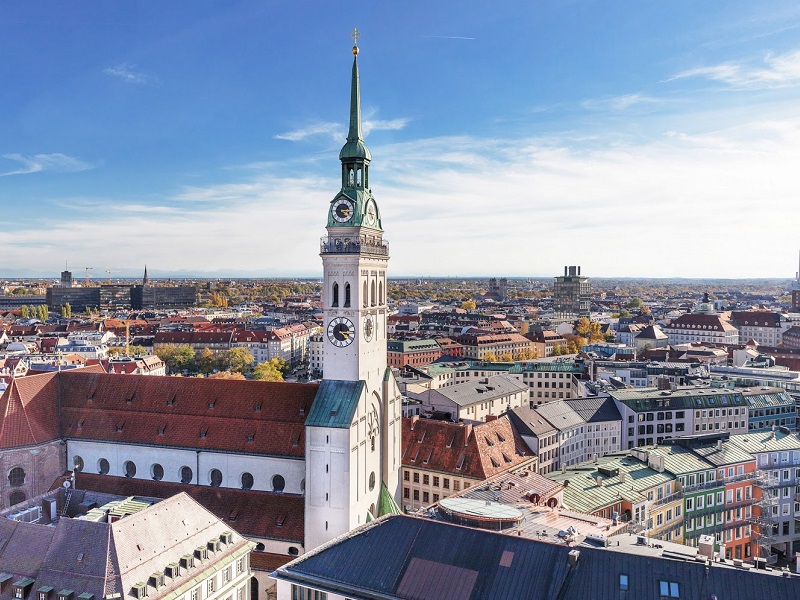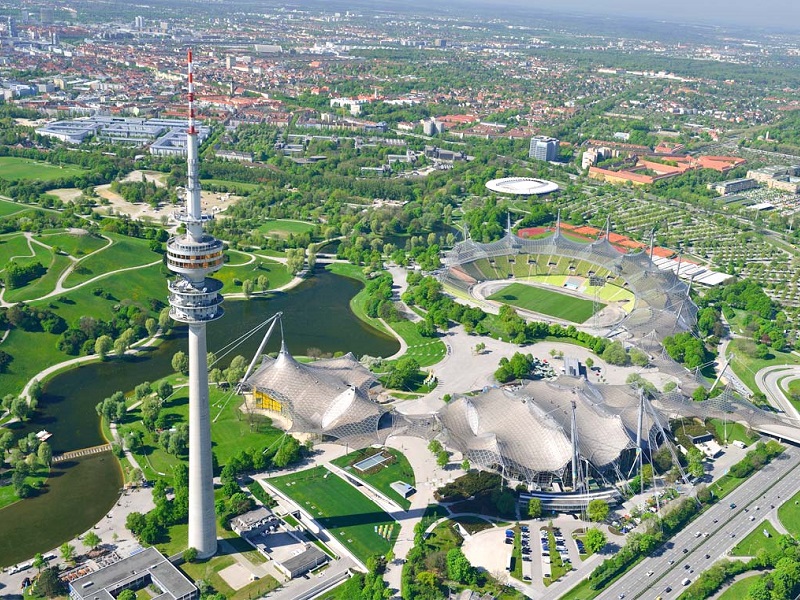Renowned as the hub of European architecture and culture, the Bavarian capital of Munich is the third-largest city in Germany, and among the top cultural destinations in Europe. The city that spreads along the banks of Isar River presents a fascinating contrast of history and modernity in its architectural wonders. Munich is also home to many universities, theatres, numerous art galleries, and world-class museums. Besides, Munich is a place where age-old traditions are juxtaposed with a progressive outlook. Here’s a look at the top tourist places to visit in Munich during your Europe tour.
Marienplatz & Town Hall
Marienplatz is the most famous square in Munich, drawing thousands of tourists every day as it has many architectural sights, a swarming market culture, churches, restaurants, and the world-famous pubs, and plenty to shop. The city’central square is dominated by 85 meters high Neues Rathaus or New Town Hall, the office of mayor and hosts the government of Munich, among the top places to visit in Germany. Built in the Gothic Revival style, this highly ornate building is a tourist magnet in itself, but what really draws the tourists to Marienplatz is the thrice-daily performance of the Glockenspiel cuckoo clock with a carousel of figures dancing at 11 AM, noon, and 5 PM. The famous Ratskeller restaurant is in the basement. The true heart of Munich, this is a lively place with street performers, from mimes to musicians. During Christmas, the square is host to the Christkindlmarkt, a Christmas market that open three weeks prior to Christmas to sell Christmas foods and drinks.
Viktualienmarkt
Next to the Marienplatz, Viktualienmarkt is a large outdoor market with 200 years of history. Filled with traditional items, local food, and colourful booths, it attracts a large number of tourists as part of Munich tour packages. The Viktualienmarkt was started in the beginning of the 19th century and it still has the same layout, at least in the first appearance. Many locals head to the market on the way to or from work and pick up fresh produce like flowers, spices, meats, cheese, fruits, vegetables, and other everyday items. One can also find some homemade baked goods, premade soups, nuts and herbs for sale. For tourists, the friendly street layout offers a lot to eat at affordable prices right from the sizzling sausages to hot pretzels, and other foods.
The Munich Residenz
Commissioned in 1385 by the Wittelsbach family, the Residenz is regarded as one of the most spectacular palaces in Europe, and among the best places to visit in Munich. Though initially it started as a modest castle, subsequent rulers renovated and expanded it, eventually turning it into a grand palace and served as the seat of residence for the Bavarian dukes, monarchs and electors till 1918. Today, the palace is a vast complex of monuments and museums, including the Residenz Museum, the Treasury, the Court Church of All Saints, and Cuvilliés-Theater. Be sure to explore the palace grounds, too, with its many wonderful old courtyards and arcades.
English Garden
Covers over an area of 910 acres, English Garden is the largest city park in Germany, and among the largest urban parks in the world. The beautiful garden is filled with lush greenery and is a perfect place to explore at leisure while in Munich, among the best European destinations for Indians. Stretches from the city center to northeast Munich, it was established in 1789by soldiers during times of peace to teach them agricultural skills, but has been enlarged over the centuries. The park got its name due to its design resemblance with English country parks. The garden contains a Japanese teahouse, a meadow where nude sunbathing is permitted and an artificial wave used by surfboarders. One can rent a paddle boat, stroll along the wooded paths, or take a relaxed tour of the traditional beer gardens. Also, the park also houses the Bavarian National Museum, with its fine collection of medieval German sculptures and tapestries, and local prehistoric artifacts.
Nymphenburg Palace
Northwest of the Alstadt, the 17th century Nymphenburg Palace is the summer home of the royal Wittelsbach family that sprawls around 5 km. This extravagant palace is surrounded on each side by the Nymphenburg Canal, which splits as it passes around the main buildings before reuniting again in a fountain-adorned pool in front of the main facade. With lavishly decorated interiors and sumptuous period rooms, this Baroque palace is not to be missed while exploring the Bavarian city of Munich. Some sections of the palace are closed to the public since it also serves as the home for the current Duke of Bavaria. One can visit the Nymphenburg Porcelain Manufactory, the Marstall Museum, two concert halls, the Museum of Mankind and Nature, and the magnificent garden pavilions in the palace complex.
St. Peter’s Church
Started in the 12th century, Peterskirche, or St. Peter’s Church, is the oldest catholic church in Munich. Towers above the city on Petersbergl hill, the church was badly damaged by fire in 1347 and was reconstructed in the Gothic style. It was altered with the addition of a Baroque choir with three apses in 1636, while the tower was given a lantern dome in place of its earlier Gothic spires. Fondly called the Alter Peter (Old Peter) by the locals, the Romanesque-style church hosts services several times each day, and it is well worth attending one to admire the interior of the building which includes the font by Hans Krumper, the red marble monuments by Erasmus Grasser, and the 15th-century Schrenk Altar with its sculptures of the Crucifixion and the Last Judgment. However, what is even more remarkable is Alte Peter, a tower accessible via more than 300 steps. The climb is worth the effort because you’ll get a breathtaking view of the Old Town. On a clear day, visitors can see up to 100 km all the way to the Alps!
Olympia Park
Olympiapark is a massive activity center in Munich that was built to host the 1972 Summer Olympics. Covers an area of some 2.7 million square meters on the Oberwiesenfeld, a former training ground for the Royal Bavarian army, it is a famous recreational center now that hosts several major concerts and events that attract locals and tourists. The park has plenty of things to do that include a stadium roof climb, ziplining, and behind-the-scenes tours showcasing the facility’s splendid architecture and design. There is also a lake in the park where one can go paddle boating. If you want to soak in the views of the Olympiapark, grab a meal at the revolving restaurant at the top of the Olympic Tower.
The Frauenkirche
One of the popular landmarks of Munich, Frauenkirche is a Gothic Cathedral and is pronounced The Catholic Cathedral of Our Blessed Lady. It was constructed in the old brick architectural style-late Gothic in the 15th century but was badly damaged by airstrikes in World War II and has been gradually restored. It is one of the largest churches in Munich as it can accommodate 20,000 people at a time. The main highlight inside the cathedral includes the 1622 Tomb of the Emperor Ludwig the Bavarian in black marble with bronze figures, the Baroque red marble font in the Baptistery with its early 14th-century Sorrowing Christ and a 1620 altarpiece of the Assumption by Peter Candid. The two iconic onion domes of the Frauenkirche are the most distinctive part of the Munich skyline. Visitors can climb to the top for views across the city to the Bavarian Alps.
Deutsches Museum
The Deutsches Museum is a world-class science and technology museum located in the city of Munich, Germany. The museum exhibits a huge collection of more than 100,000 science- and technology-related objects from the Stone Age to today. It is one of the oldest and the largest museums of its kind in the world. The extensive collections relating to transport are astonishing, covering trains, aircraft, shipping, cars, and even bicycles. One can see a replica of the Red Baron’s biplane from the First World War, a Venetian gondola, and a 19th-century wooden fishing boat. Also, visitors can take free guided tours through the museum’s 50 exhibit areas, view demonstrations on subjects ranging from electricity to musical instruments, and participate in a wide variety of hands-on activities. Besides, The museum has 1,000 activities for kids in the Kids Kingdom making it a favorite place to visit for families in Munich.
Asam Church
Asam Church, also called Asamkirche is a beautiful church dedicated to St. John of Nepomuk. The church was built in the 18th century by brothers Egid Quirin Asam and Cosmas Damian Asam as their private chapel. Represents the Baroque style of architecture, the church is richly decorated with stucco figures, frescoes, and oil paintings. Intricate detailing of the statues, the gilding, and the high altar are a sight to behold. While its exterior is impressive enough, particularly the large doorway flanked by massive columns and crowned by a figure of St. John kneeling in prayer. The main highlight of the church includes a wrought-iron grille from 1776 that separates the stucco figures of the saints from the long nave with its galleries.
BMW Museum
Known for its fast cars and motorcycles, BMW Museum is a must-visit place for automobile enthusiasts during their Germany tour. Opened in 1973, the museum covers every technical development the company has undertaken from its inception more than a century back to the present day, like aircrafts, turbines, engines, motorcycles, and even futuristic models still on the design board and in the planning stage. The museum is visited by around 250,000 people to get a real experience of the working of this high-end world-class automobile company and see firsthand the technical innovations that have taken place over the decades. The permanent exhibition contains 110 exhibits including many old cars and motorcycles inside the bowl-shaped building.































